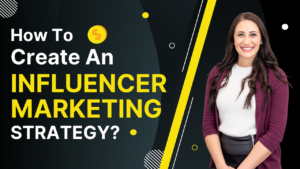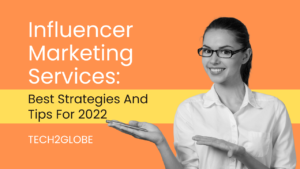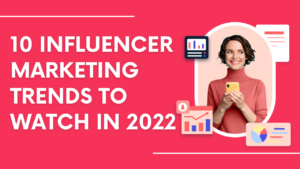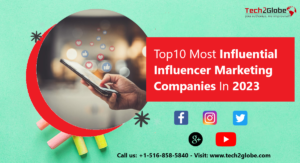Summary: Are you getting ready for an influencer marketing campaign? Then, give these important KPIs top priority: ROI, engagement rate, brand awareness, referral traffic, conversions, and click-through rate. Understand why knowing KPIs is so important for your success and how the correct tools will help you to improve it.
Key Takeaways
- Around 50% of consumers rely on influencers before they make a purchasing decision.
- It is important to remember that influencer campaigns should generate more revenue than costs because ROI matters.
- Public Awareness as a KPI can greatly enhance how well your brand is known.
- Additionally, if you find out which influencers work best for you, you can keep working with them. This helps build strong brand ambassadors and loyal customers.
- Awario, HypeAuditor, and Affable.ai are among the best influencer marketing campaign tools that will make your analyzing process easier.
According to the Influencer Marketing Benchmark Report 2024, there has been a huge rise in influencer campaigns. By the end of the year, the industry will have grown to an amazing $24 billion! Influencer marketing is clearly booming and full of potential since 85% of people who tried it found it useful, and 60% increased their budgets.
Influencer marketing can now be used to promote almost anything and reach your target audience. This is especially true now that AI has made it easier to find and work with the right influencer for your KPI goals for influencer marketing campaigns and optimize strategy on different platforms ( Facebook, Instagram, TikTok, etc.)
KPIs can draw on industry standards or campaign performance from past efforts. Measuring your return on investment (ROI) will define success for any marketing campaign, just as for any other one.
What is an Influencer Marketing Campaign?
A brand and an influencer work together on an influencer marketing campaign to get the influencer’s followers to buy a product or use a service. Individuals with a sizable social media following who are trusted by their followers are known as influencers.
Some examples of influencer marketing campaigns include:
- Giveaways and contests: You can give away free stuff or services at a discount.
- Product collaborations: It can include unboxing videos, reviews, and content before the product comes out.
What are the key KPI goals for influencer marketing campaigns?
You should consider KPI goals for influencer marketing campaigns before setting your KPIs. Think about what you want to get before you hire an influencer. What did you get out of your last influencer campaign? Would you like to change anything to make it work better?
Your influencer campaign’s strategy, content, and channel will be based on your main goals, so give them some thought. So, do you want to raise your brand awareness, get more leads and conversions, or make more sales?
It would help if you also thought about your social media platform. How does your brand get people to interact with it? What platform do the people you want to reach use? Where are your successes coming from, whether they’re free or paid?
Top KPIs for Measuring Influencer Marketing Campaign Success
1. Return on investment (ROI)
One of the most important KPIs for any marketing campaign is the return on investment (ROI), which measures how profitable the campaign is. This metric not only shows that the campaign was successful, but it also gives you the power to run another one!
The goal is to get a positive ROI, which means that your income must be higher than your costs, such as the cost of your influencer and any other expenses that come with them.
Remember that ROI isn’t always about “profit.” Earned Media Value (EMV) is another metric that marketers like to use to figure out how much money influencer campaigns make.
When it comes to ROI, Facebook and Instagram tend to provide strong ROI for business.
The formula to calculate the return on investment (ROI) for an influencer marketing campaign is:
ROI = (Revenue Generated – Total campaign cost) / Total campaign cost
2. Engagement rate
Engagement is another important KPI because it shows how your campaign was received. Traffic and reach show how many people saw your content, but audience and engagement show how well it was received.
Engagement is important because it shows how well your campaign is reaching your audience, how relevant you are, and how loyal your customers will be.
Furthermore, most experts agree that a rate of engagement of 1% to 5% is good for campaigns. This means that for every hundred times your message is seen, people will interact with it at least one to five times.
Formula, i.e., generally used to calculate engagement rate by post:
ER (%) = (Total engagements on a post / Total followers) * 100%
Average ER (%) = ER (%) / Total Posts
3. Brand awareness and Public Awareness as a KPI
Influencers can boost brand awareness by reaching a large audience. You need to start here to increase brand awareness and build relationships.
Brand awareness KPIs, like sentiment and reach, are top-of-funnel metrics that reveal how your brand is perceived. Even if influencers have smaller followings, their audience should be genuinely interested in your product, making them valuable for smaller brands or niche industries.
Track impression data on your campaign-specific blog posts, social posts, videos, and other content. GA4 and social media analytics can help.
4. Referral traffic
Traffic is a key part of any online marketing plan because it tells you how many people are actually seeing your content.
If you look at traffic, you can get a good idea of how far the campaign reached and how well it did overall.
For instance, if you see a rise in traffic without a corresponding increase in conversions, it suggests that there might be an issue on the page. You might need to adjust your landing page or experiment with A/B testing for content or call-to-action buttons to determine what resonates best with your audience.
Here are some traffic metrics you can monitor:
- Number of new visitors
- Total sessions
- Sources of referral traffic
- Total page views
- Average time spent on site
5. Conversions
According to the Influencer Marketing Benchmark Report 2024, 56% of the main purpose of running influencer campaigns is to create User Generated Content (UGC). UGC can enhance brand trust and influence purchasing decisions, which indirectly supports conversion goals.
We marketers know that the main goal of any campaign is to get more sales and growth.
To easily see how the influencer marketing campaign led to conversions, keep track of sales before, during, and after the campaign. Then, look at how sales changed while the campaign was going on.
Setting up promo codes, affiliate links, UTM parameters, landing pages, and link tracking for the campaign will give you a more advanced method. This will help you keep track of where customers who bought during the campaign came from.
6. Click-through-rate
CTR keeps track of how many times a possible customer clicks on a link. Additionally, Google Campaign Manager lets you create your own links for influencer marketing campaigns. Track how well each influencer is doing by giving them their unique link. Test which Instagram Stories, ads, and bio links work best by making your own.
Tracking CTR is very important. Customers may not be interested in what you have to offer if they aren’t visiting your website. Moreover, a high CTR brings more people to a website, which lowers the sales funnel.
Low CTR could be because of bad design. Images are very important for Instagram and other social media campaigns. Therefore, make appealing campaign ads with the help of apps or professionals.
Benefits Of Measuring KPIs For Your Influencer Campaign
The vital advantages of knowing KPIs for your influencer campaign:
1. Improves performance tracking and return on investment (ROI) analysis.
KPIs should be set at the start of your creator collaboration to assess marketing performance accurately. This includes:
- Counting the campaign’s number of followers.
- Assessing your brand’s engagement.
- Calculating the partnership’s revenue.
Brand awareness KPIs help you make data-driven marketing decisions that affect your brand’s reach, reputation, and bottom line.
2. Helps you improve influencer campaigns and work with the best influencers.
There are two key reasons why your influencer campaign might not be delivering results: either your content isn’t resonating with the audience, or you’re working with influencers who don’t align with your brand values.
For instance, if you run a fitness brand and your influencers post content about fad diets or unrealistic workout routines, your campaigns are unlikely to connect with your audience. Measuring KPIs like engagement, impressions, and audience insights helps fine-tune your approach, ensuring you collaborate with influencers who resonate with your brand’s mission.
3. Allows you to compare and measure influencers against each other.
By keeping track of KPIs, you can compare and contrast how well different influencer marketing campaigns are working. Also, tracking and analyzing data from many campaigns helps you find patterns, trends, and the best ways to do things that get great results.
Handy Tools for Influencer Analytics
Even the most dedicated marketer would need help analyzing each influencer’s performance.
Awario
Awario keeps track of reach, number of mentions, and share of voice. A list of the influencers and posts that mentioned your brand the most and got the most views is also possible through this tool.
You can set up alerts for keywords related to your brand name. This will give you a mention feed with social media posts about your brand that you can sort by date, platform, hashtags, and other factors. Amazingly, you can also keep an eye on how often people post.
HypeAuditor
This app helps you discover Instagram, YouTube, and TikTok influencers that fit your marketing campaigns well. You can look for influencers who know your brand or whose followers are like the ones you want to reach. Consequently, you can also look for experts in a niche who make real content.
Affable.ai.
Affable.ai is a marketing platform that lets you check out the influencers on your list of possible business partners. It works for people with many followers on Facebook, Instagram, TikTok, Twitter, YouTube, and more. Their age, location, number of followers, language, and other things can be found. It can also create, improve, and run campaigns with influencers.
GRIN
The most detailed information about how well a social post works can be found in GRIN. It looks at things like clicks, engagement rate, and conversions. This information will help you determine whether your campaign with influencers worked.
GRIN can also check your marketing campaigns’ budget, revenue, conversions, and media value.
Emplifi.io
Emplifi.io is an AI-powered tool that makes it easier to manage and analyze your social media audience. This platform has many functions, such as looking at each follower and influencer profile and giving you marketing campaign ideas and strategies.
Also Read:-
How to Use Hashtags Effectively on Social Media?
How To Do Paid Social Ads Competitor Analysis?
Optimize Your KPIs with Effective SMO Services
Ever thought influencer marketing was just about handing out freebies? There’s more to it! It’s a great way to connect with your audience and drive genuine results. If you’re ready to make your campaigns work harder for you, our SMO service is here to help turn those efforts into real success!

Sarabjeet Singh is the Vice President of Operations at Tech2Globe and brings over 15 years of experience in various industries, including IoT, education, retail, government, FMCG, hospitality, and e-commerce. His leadership focuses on operational excellence and exceeding customer expectations, implementing contemporary solutions. Sarabjeet’s expertise spans e-commerce consulting, software development, data management, BPO/KPO support services, digital marketing, graphics, and startup consulting. He fosters a collaborative work environment, ensuring Tech2Globe delivers high-quality solutions.










